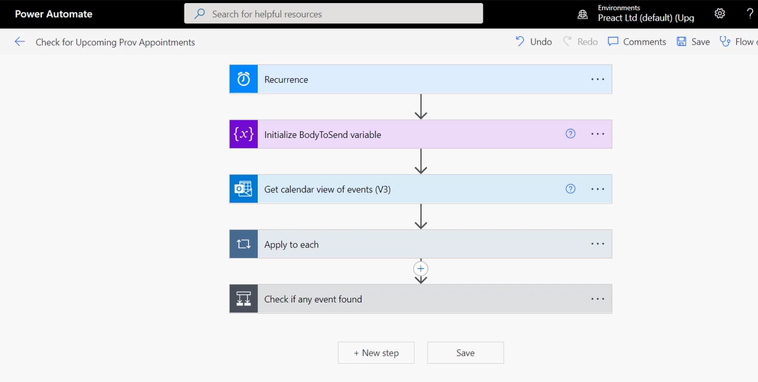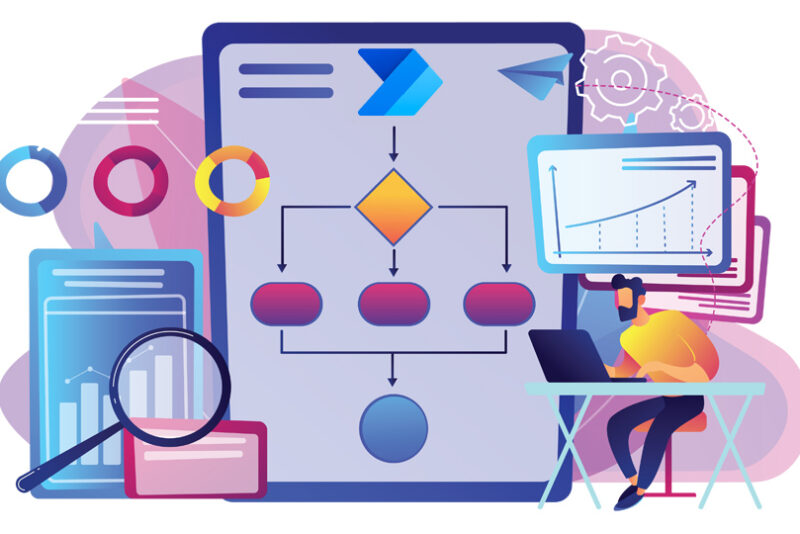Use Power Automate flows to automate any repetitive process in your organisation.
Power Automate, part of the Microsoft Cloud Platform, facilitates app integration, process streamlining and greater efficiency.
This post delves into examples showcasing how to use Power Automate to unlock productivity gains by optimising workflows with intelligent automation.
Speak to us today to discover how automated workflows could transform your organisation.
Types of Power Automate Flows
There are 3 main types of flows to help you complete tasks quickly and consistently:
- Automated Flows – Triggered in near real-time by events occurring to complete a set of tasks.
- Scheduled Flows – Triggered once a designated time is reached or elapsed for reoccurring automation.
- Instant Flows – On-demand flows triggered by users’ push of a button. Especially useful for repetitive but ad-hoc tasks.
6 Ways You Can Apply Power Automate Flows
1. Send Automated Emails at Case Closure (Automated Flow)
Where a case has been solved, users often close the case, record details on the resolution, and send off a feedback survey.
Instead, you could automatically send a feedback survey using a Power Automate flow whenever a case record is set to ‘resolved’.
This process will ensure the survey invite is consistently sent on time, and it reduces manual work. Additional elements on the email, such as case details, can easily be customised.
2. Keep On Top of Meeting Statuses (Scheduled Flow)
Where meetings are constantly changing, there is a lot of last-minute scheduling. Often it can be too late before you realise people have yet to confirm, and time can be wasted chasing up on attendees.
The solution is a flow that runs daily to check the status of meetings for the next day. This will email a report detailing each meeting, attendees, individual RSVPs and overall meeting status. Giving you the information you need and time to check in with those who’ve yet to confirm their attendance.

3. Update Child Records based on changes to a Parent Record (Instant Flow)
Sometimes a process will involve a sequence of follow-up tasks, but only occasionally. These actions may be repetitive and tedious because they’re not always needed, so they can’t be addressed with an automated flow.
Fear not. A button flow allows automation flexibility!
For example, if users update address details on a parent account, they may need to update child accounts and contact records, but in other instances, this isn’t required. In these scenarios, an instant flow provides a button to trigger an automation flow only when clicked to apply these actions for you.
4. Integration with ERP/Accounting Applications (Automated Flow)
If you have systems outside the Microsoft Dataverse ecosystem, there may not be any native integration, but Power Automate can help bridge those gaps. Changes made in one system can trigger a flow that will map this new information to the other.
For example, an opportunity is closed as won in Dynamics. From the order record, details such as payment amount, payment terms and contact details can be sent to your accounting app. This ensures the latest detail is synchronised and allows finance teams to quickly issue invoices without duplicating these data entries.
5. Update Currency Conversion Rates (Scheduled Flow)
Currency rates are ever-changing, so rather than manually update these in Dynamics, it is more accurate and efficient to automate this process.
For example, we have built flows where multiple currencies are tracked against sterling. These refresh conversions daily to ensure quotes, orders, invoices, and other processes reflect the latest exchange rates.
6. Request Approval When Ready (Instant Flow)
You may be working on a complex quote requiring confirmation from multiple people in your organisation before sending the proposal.
A “Request Approval” button will notify your team lead once you’ve drafted the quote.
Each notification can be customised to ensure summary details about the quote are provided and link these to the appropriate record. This simplifies the process for approvers to access the information they need and provide their response quickly.
Power Automate: Next Steps
Implementing intelligent flows helps everyone to complete tasks quicker, consistently and efficiently to transform productivity. These examples cover a few scenarios where Power Automate allows organisations to innovate more quickly.
Contact us today to speak to one of our consultants and discuss how we can help modernise your processes with Power Automate.





